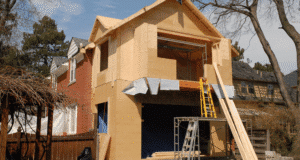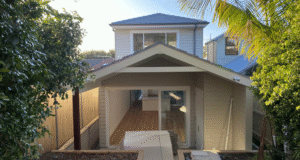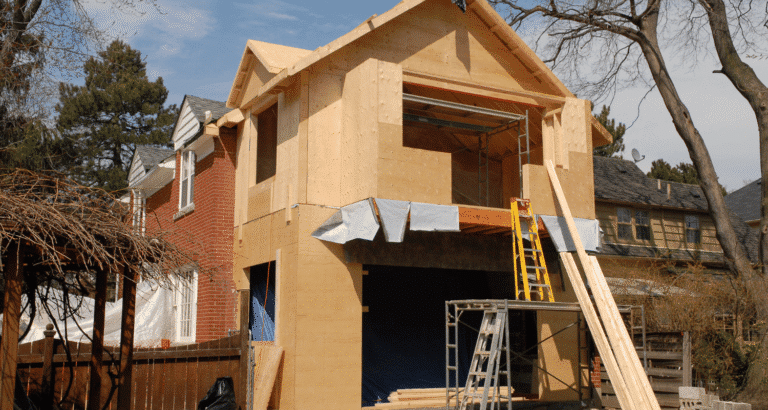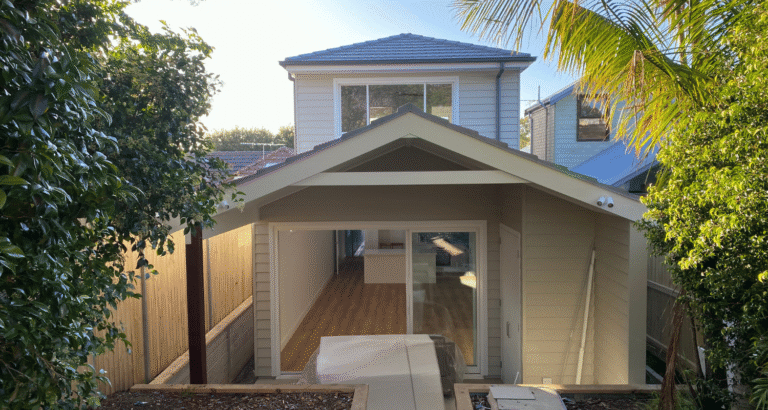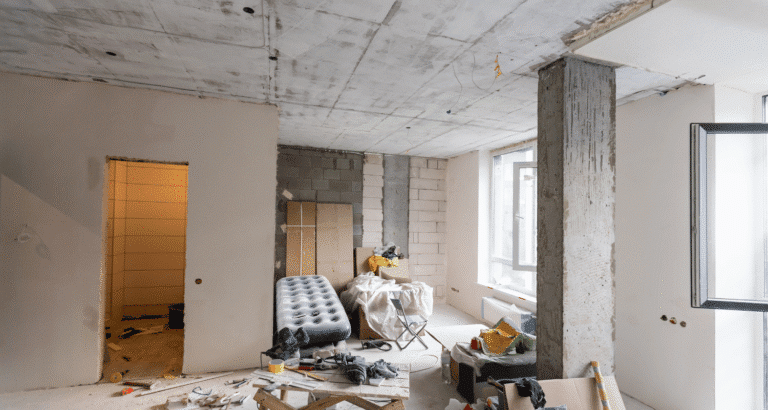Have you ever noticed how your walls have ended up lumpy and how you found yourself questioning what happened to them? Homeowners often complain about bumpy walls, which can be caused by several factors; the most frequent are as follows:
- Improper installation of the drywall
- Inadequate repair of the plastered walls
- Uneven textured walls that arose during previous building processes
At Builders Group Construction, we understand the frustration caused by poor finishes. Whether you’re trying to figure out why your house has typical homebuilding defects or simply want to have the walls inside your house painted, this blog reveals the reasons and solutions for bumpy walls.
Common Causes Of Bumpy Walls
The majority of the rough walls are the result of poor installations or botched patchwork. Hasty drywall construction, poor taping, or omitting vital steps, such as sanding, can also leave the walls riddled with flaws. Old repairs can also be seen in unblended seams or lumpy plaster. Existing flaws can be exacerbated by:
- Environmental factors, such as humidity
- Inadequate insulation
Such defects are common in home builds and accumulate over time, making them visible, especially from bright light. Identifying the cause is the initial step to a smoother and more refined outcome.

Uneven Drywall Repair
A poor repair of drywall is among the major causes of imperfections on surfaces. When drywall joints aren’t properly taped or when joint compound is applied too thick, bumpiness and ridging occur. The discrepancy in the sanding of layers only adds to the problem.
Reinforced repairs, performed to save a few steps, usually leave visible patches or seams (DIY repairs). Unless feathering is performed properly, the edges will be visible and will stand out when using light. The crevices and bumps that appear on an unfinished drywall surface must be well smoothed using various sanding techniques to achieve a flush, invisible finish.
Textured Wall Issues
Main issues that may have caused textured problems on their walls are in old houses or houses with substandard renovations. Those textures, such as knockdown texture or orange peel, which are intended to cover up flaws, will instead draw attention to them when not applied evenly.
The texture is heavy or inconsistent because the surface appears rough and patchy. Most residential owners attempt to mask the damage by applying texture, and this, in most cases, adds worsening camouflage. Old paint, like popcorn ceilings, also gathers dust and isn’t nice to look at. These problems can be resolved through sanding during skim coating or by taking away the texture altogether.
Fixing Plaster Walls
Drywall and plaster walls are different. Most of the old houses are solid plaster, which has been badly compromised by attempts to patch them with drywall materials. Such a mismatch results in cracks, breaking away, and uneven surfaces.
There should be proper repairs, even of a minor nature, through compatible materials such as lime-based plaster. The failure to reinforce the mesh or apply bonding agents may lead to the detachment of the patch from the original wall. Repair of plaster walls done under proper conditions will provide a neat finish. Most cases have recommended professional assistance to ensure the results last.
Smoothing Interior Walls
This is a complex process that requires skill and patience. It usually begins by scraping away any texture or debris, then applying a skim coat of joint compound. The surface should be sanded (usually multiple times) after drying to remove imperfections.
This will allow us to remove bumps and produce a flat, smooth wall. Although it can be done yourself, improper practice (such as oversanding or leaving some areas ununiformly sanded) can also be expensive. Hiring professionals will result in fewer messes and more durability.

DIY vs. Professional Repair
Repairing a wall by yourself may be an economically favorable option, but the results tend to be very haphazard when achieved. The most frequent are a wrong mix of compounds, incomplete sanding, and failure to blend the patch with the rest of the surface.
While small holes or dings can be tackled at home, experts should always do larger repairs and smoothing of the walls. Builders Group Construction runs on quality tools and materials, which result in perfection. Not only does a professional finish look better, but it is also long-lasting and enhances the overall value and looks of your home.
Preventing Common Home Construction Flaws
Bumpy walls do not look good, and the best way to prevent them is to avoid them during the initial construction or remodelling. One of them is to ensure they hire qualified people and use the correct methods for drywall and plastering.
Another thing to always be aware of is whether your contractor is sanding between coats, whether they are using corner bead, and whether they are installing seams correctly. Poor-quality material and short deadlines often result in uneven finishes.
At Builders Group Construction, we have established procedures and experienced personnel who identify and eliminate defects before they become visible. As a result of preventive care, the surfaces of the insides become long-lasting and smooth.
When To Call A Professional
Other wall problems are simply too big or extensive to be fixed via a DIY. Big cracks, protruding plaster, or frequent lumps are the indications that you require a professional evaluation. An old home wall may contain asbestos that can be removed by professionals only.
Experts can study structural issues, detect moisture, and suggest an optimal repair plan. Builders Group Construction offers professional investigation and interior design of your custom-made home. You do not want to compound the problem by doing the job wrong, so do it right the first time.
Conclusion
Rough walls are frustrating, and that’s not the way it has to be. Whether it’s an uneven drywall repair, issues with textured walls, or one of the frequent construction pitfalls, there is a proper solution at hand. At Builders Group Construction, we are committed to delivering homeowners a smooth and clean wall that will look as new as the day it was installed. Ready to get rid of bumpy walls? Contact us now and get professional assistance.
FAQs
How do you get rid of bumpy wall texture?
To eliminate a bumpy finish, scrape off the surface and use a skim coat of joint compound. When the wall is sanded and primed, it is smooth and ready to paint.
Why are walls so bumpy?
Walls also get bumpy as a result of improper drywall installation, patchwork, or textures. Surface imperfection can also be caused by environmental conditions such as moisture or settling.
Why do Americans have textured walls?
Rough walls serve the purpose of concealing imperfections, minimizing apparent damage, and eliminating the finishing expenses. They were also popular during building booms as being quick and low-maintenance.
Why do apartments have bumpy walls?
This is mainly because many apartments use textured walls as a form of masking hastily built structures or the need to constantly fix up. It is economical to conceal the flaws, and it lowers the maintenance costs for renters.


